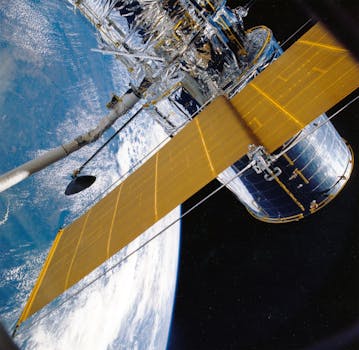GEO Satellites: Unlocking the Power of Geostationary Orbit

GEO Satellites: Unlocking the Power of Geostationary Orbit
GEO satellites, or Geostationary satellites, are a type of satellite that orbits the Earth at an altitude of approximately 36,000 kilometers, allowing them to remain stationary in the sky relative to a fixed point on the Earth’s surface. This unique characteristic makes GEO satellites an essential part of modern satellite communications, offering a wide range of benefits and applications.
The concept of geostationary orbit was first proposed by science fiction writer Arthur C. Clarke in 1945, and the first GEO satellite, Syncom 2, was launched in 1963. Since then, the use of GEO satellites has become increasingly prevalent, with thousands of satellites currently in orbit around the Earth. GEO satellites are used for a variety of purposes, including telecommunications, weather forecasting, and navigation.
Benefits of GEO Satellites
One of the primary benefits of GEO satellites is their ability to provide continuous coverage of a specific region. Because they remain stationary in the sky, GEO satellites can offer uninterrupted service to a particular area, making them ideal for applications such as television broadcasting, internet connectivity, and mobile communications. Additionally, GEO satellites can provide high-gain antennas, which enable them to transmit and receive signals with greater strength and clarity.
GEO satellites also offer a high level of reliability and stability. Because they are in a fixed orbit, GEO satellites are less prone to interference and signal loss, making them a popular choice for critical communications applications. Furthermore, GEO satellites can be used to provide backup connectivity in the event of a terrestrial network outage, ensuring that communication services remain available even in the most remote or disaster-affected areas.
Applications of GEO Satellites
GEO satellites have a wide range of applications, including telecommunications, weather forecasting, and navigation. In the field of telecommunications, GEO satellites are used to provide internet connectivity, mobile communications, and television broadcasting. They are also used to support critical communications applications, such as emergency response and disaster relief.
In addition to telecommunications, GEO satellites are used to monitor weather patterns and provide early warnings for severe weather events. They are also used for navigation, providing location information and timing signals for GPS and other navigation systems. Furthermore, GEO satellites are used for Earth observation, providing valuable data on the environment, climate change, and natural resources.
Challenges and Limitations of GEO Satellites
Despite the many benefits and applications of GEO satellites, there are also several challenges and limitations to consider. One of the primary challenges is the high cost of launching and operating a GEO satellite. The launch process is complex and expensive, and the satellite must be designed to withstand the harsh conditions of space.
Another challenge is the limited availability of orbital slots. Because GEO satellites must be spaced at least 3 degrees apart to avoid interference, there are a limited number of available slots. This has led to a growing demand for alternative orbits, such as Medium Earth Orbit (MEO) and Low Earth Orbit (LEO).
Finally, GEO satellites are also subject to various forms of interference, including signal jamming and space debris. Signal jamming can occur when an unauthorized transmitter interferes with the satellite’s signal, while space debris can cause physical damage to the satellite or disrupt its operation.
Future of GEO Satellites
Despite the challenges and limitations, the future of GEO satellites looks bright. Advances in technology are making it possible to build smaller, more efficient satellites that can be launched at a lower cost. Additionally, the development of new orbits, such as MEO and LEO, is providing more flexibility and opportunities for satellite communications.
The use of GEO satellites is also becoming more widespread, with new applications and services being developed all the time. For example, the use of GEO satellites for 5G networks is becoming increasingly popular, as they can provide high-speed, low-latency connectivity to remote and underserved areas.
In conclusion, GEO satellites are a crucial part of modern satellite communications, offering a wide range of benefits and applications. While there are challenges and limitations to consider, the future of GEO satellites looks bright, with advances in technology and new developments in the field of satellite communications.




